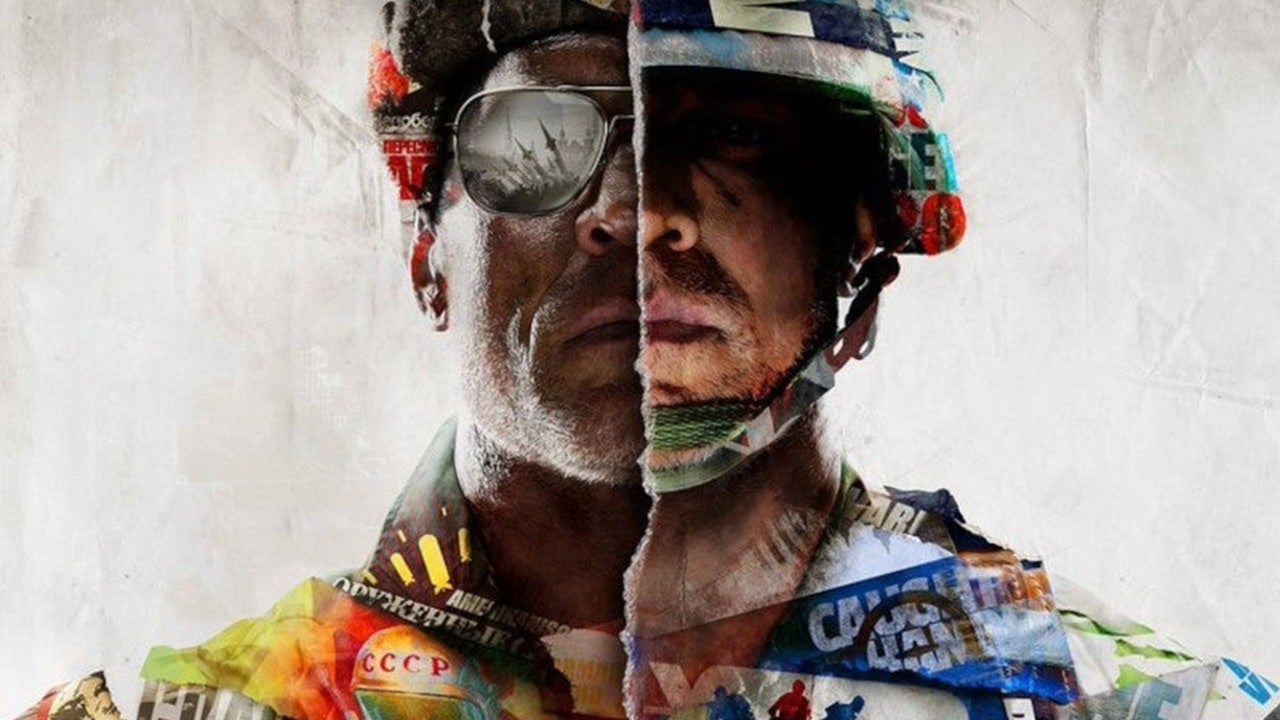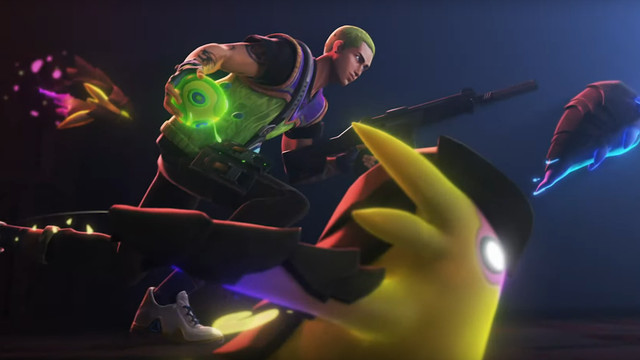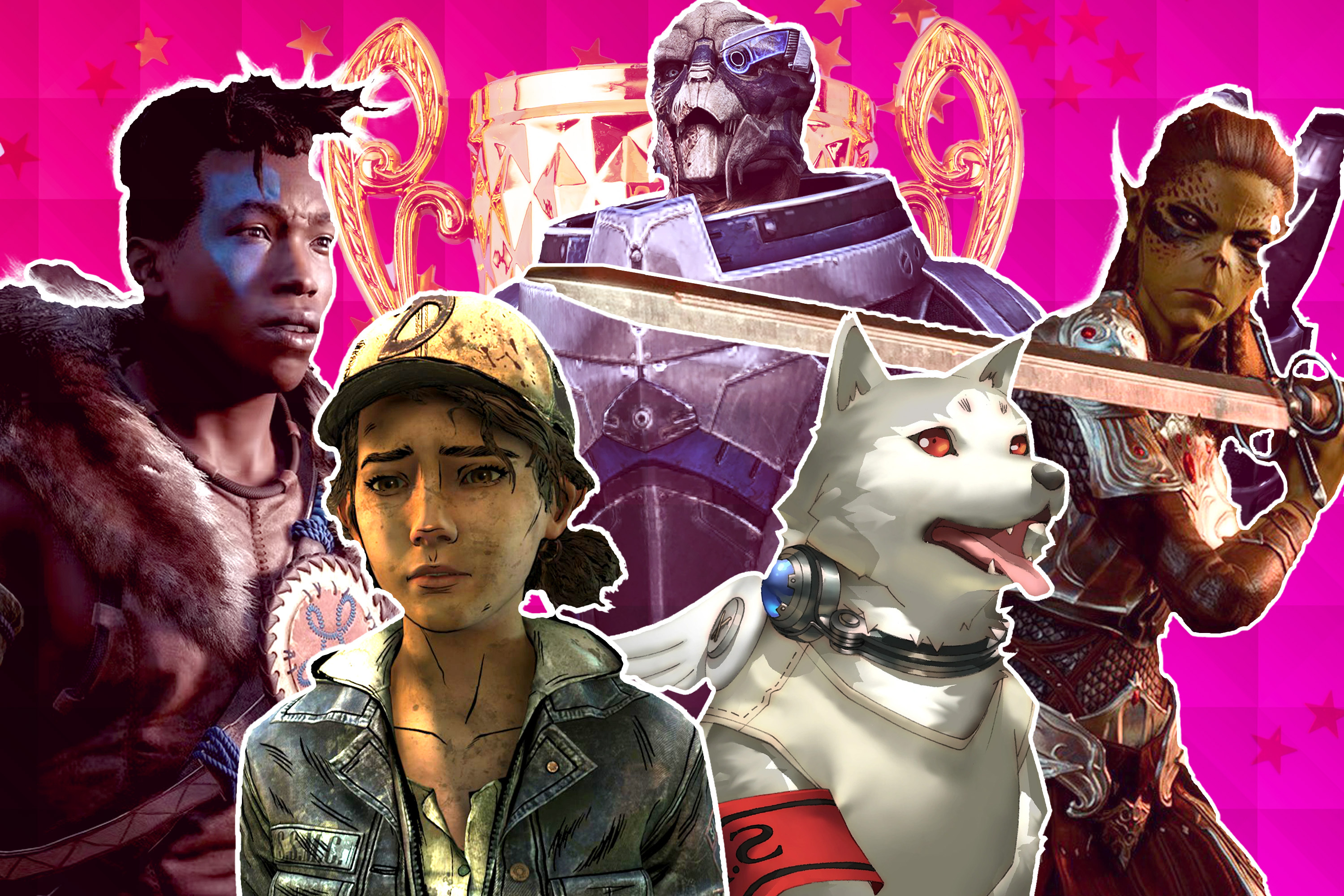The era of the bad movie tie-in is over. Today, we’re living in an age where games based on licensed IP are among the cream of the crop: the Batman Arkham franchise, The Witcher games, and Insomniac’s Spider-Man series are all critically acclaimed top sellers. Hoping to run alongside them is Ubisoft’s Avatar: Frontiers of Pandora.
But Ubisoft faced a challenge that Rocksteady and Insomniac never did: Frontiers of Pandora isn’t just a licensed game, it’s canon to the Avatar universe. That means everything in it is a recognised part of the official Avatar story, approved by the studio who made the original movies. Anything Ubisoft created had to fit perfectly within this existing, intricate world. Achieving this required extensive research and constant communication with the team of James Cameron, Avatar’s creator and director.
It has been the duty of Massive Entertainment, one of Ubisoft’s European development studios, to take on that challenge. Based in Malmö, Sweden, it’s best known for creating The Division. But since 2017, Massive has been hard at work making an open-world adventure in which you play as a Na’vi – one of the blue, cat-like people from the Avatar films. While you are a native of the Na'vi homeworld, Pandora, you’ve been held captive by the invading humans of the RDA for most of your life, and so the story explores reconnecting with your culture and people.
These events take place in parallel to Avatar: The Way of Water, but unfold on an entirely different continent called the Western Frontier. Crafted in collaboration with Lightstorm Entertainment – James Cameron’s own movie studio – it is a brand new, wholly original corner of Pandora. This new region is not just the stage for a new story, but also the home of new Na’vi clans, the habitat of new creatures, and the soil from which new plants grow.
“We really thought a lot about the Western Frontier, what does that provide?” says Drew Rechner, Frontiers of Pandora’s associate game director. “We just wanted to ensure that our stories and our themes, while they felt familiar, were different [to those in the films]. Because we just didn't want to feel like we were retelling a story that most of the world has seen.”
But, as previously mentioned, it wasn’t enough that everything crafted for the Western Frontier is new; it also had to adhere perfectly to Avatar’s intricately detailed lore. It’s all canon - an officially recognised, important part of the Avatar universe - and so there’s no room for error. Simply put, this was a colossal undertaking.
This may be Massive’s first visit to Pandora, but Ubisoft has visited the moon before. Its previous excursion was back in 2009 with Avatar: The Game, a movie tie-in that acted as a prequel to the original film. Ubisoft’s Montreal studio was given permission by Lightstorm to do whatever it wanted for the game, however none of it would be considered canon to the Avatar universe. And so the many new characters and clans created for the game have been long since forgotten, relegated to life as wiki pages.
It's not just the clans that have been forgotten. Avatar: The Game did not review especially well. As with many movie games from the 2000s, it was considered dull and rudimentary. Both Ubisoft and the wider AAA industry has since moved on from film tie-ins, seemingly as a response to their continued struggles. But, despite being a disappointment, Avatar: The Game did provide something to build on. The union between Ubisoft and Lightstorm could be the basis of something greater: a completely authentic rendition of Pandora in which you live out the next canon chapter of the Avatar story.

Several years ago, prior even to the Disney acquisition of Avatar distributor 20th Century Fox, Massive created a proof of concept for a new Avatar game. Built using the studio’s own Snowdrop engine, which has previously powered The Division games and is the base of the upcoming Star Wars: Outlaws, it featured a deeply detailed rendition of Pandora. This demo was then delivered to the heads of Lightstorm Entertainment.
“It was stunning,” recalls Jon Landau, producer of the Avatar films. “They showed us plants. They showed us reflections in water on a river. They showed us creatures moving through the environment. They did this all on their own, not by taking any of our assets and doing it.”
Joshua Izzo, the studio’s vice president of franchise development, was similarly impressed. “And seeing that, seeing the level of care and the level of detail that was put into such a snapshot of that promise of what the game could deliver, was enough for the filmmakers to take notice,” he says.
Impressed by the demo, Lightstorm arranged meetings with Massive to learn more about what the studio envisioned. Frontiers of Pandora’s creative director, Magnus Jansén, remembers those early conversations. “It was super clear that we were on the same page,” he says. “That this needed to be all that a game can be. It needed all of the advantages that the interactive medium has over the linear one. The freedom to explore and look at all of the cool things that Pandora has to offer, at your own pace.”
But Lightstorm was also impressed by Massive’s dedication to making this virtual Pandora as authentic as possible, not just in terms of its visuals, but its philosophies and values, too. The studio pitched a game in which the player would care about the world in which they live and fight for its plants, animals, and culture. It would feature a standalone story that explored a struggle for identity and reconnecting with lost heritage. This was exactly what Lightstorm wanted to hear, at exactly the right time; simultaneously to Massive building its proof of concept, Lightstorm itself had been pondering an expansion into the interactive space. And so when the demo arrived and showcased such a deep understanding of the Avatar universe, it was clear what needed to happen.
“It was this serendipitous moment, where everything came together at the right time,” says Izzo. “And each one of the companies respectively said, ‘We want to be in business together.’”
* * *
With Massive and Lightstorm united, it was time to start the long and challenging journey of creating a game where every character, clan, tree, mushroom, and blade of grass had to perfectly adhere to James Cameron’s rulebook.
“Well, the first thing we did is we watched the movie a whole lot,” says Ditte Deenfeldt, Frontiers of Pandora’s game director. “You familiarize yourself with the world and then you figure out how can you make the best possible game in this? Where are all the cool interactions? Where are all the cool synergies and interconnections that we can do?”
Watching the film over and over wasn’t enough to truly know the world of Pandora, though. To learn everything there was to know about the universe, Massive was given access to Lighstorm’s immense vault of secrets.
“We had full access to everything that they're working on,” recalls Jansén. “So we had the enormous privilege to be able to read the scripts, especially for Avatar: The Way of Water before it came out.”
Early access to what was coming in the next film helped refine the project’s direction and ensure it stayed lore-accurate to the time period it would be set in. But knowing what would happen in The Way of Water was just the beginning.
“The work that's gone into developing Pandora on the Lightstorm side is much, much more than what you see in the movie,” Jansén reveals. “It's like a tip of the iceberg. There's so much more work, so much written, so much research, so much thought put into it. So we have access to all of that.”
Landau notes that Lightstorm has an “evolving bible of Avatar lore” that it was able to provide, which covers everything from characters and vehicles to cultures and clans. Izzo describes it as “the 40,000 feet down to the most granular, tiny detail."
This bible naturally comes in document format – reams and reams of background and art and facts. But when it came to asking the most probing questions about Avatar’s universe, the Massive team were able to call on Lightstorm’s biggest Pandora nerds for help.
“We have a dedicated lore person called Jennifer Bartram,” says Chella Ramanan, senior narrative director on Frontiers of Pandora. “She just has this encyclopedia inside her mind, and it's incredible. So I'll ping Jennifer and be like, ‘We need this.’ Or, ‘Is there something around what do [the Na’vi] do if…’ And sometimes she'll know. And it's unusual if she doesn't, [but that] usually means it doesn't exist yet.”
“It's hard for people who came later in the project, because you've got a lot of reading to do,” Ramanan says. “For two weeks you're just reading stuff. And then [new staff] would come with maybe ideas, and it's like, ‘No, we can't do that because they don't use metal,’ or things like that.”
Almost everything in Avatar: Frontiers of Pandora has to adhere to the Three Laws of Eywa, the ruling principles of the Na’vi people. “The Na'vi may not place stone on stone,” explains Izzo. “They may not use the turning of the wheel. And they may not use the metals of the earth. That is something that is canonical from [James Cameron] that you can't break.”
All this may sound somewhat restrictive, but Massive instantly related to Lightstorm’s rigorous worldbuilding. “All of those things are exactly how we at Ubisoft develop our worlds,” says Jansén. “We start with the world. Here's the geography, here's the climate, here's the species, here's how they live, here's their culture. And that leads to these clans, that leads to these conflicts, that leads to these people and their agendas. So everything's really ground up.”
The lore is vital to Frontiers of Pandora’s status as a canon Avatar project. But it’s also just one layer of the experience. The fiction cannot come alive without a game to power it. And so all that research had to be translated into an interactive world with systems and mechanics. That would require close collaboration between two studios from two very different worlds; the clashing values of linear movies and freeform video games risked conflict between Lightstorm and Massive. For this Avatar game to succeed, a balance of trust was required.

“At the start of a process, it's a little bit uncomfortable,” admits Avatar producer Jon Landau. “Because you think that you found the right partner. You think you could trust that partner. But you really don't know until you go through a process.
"Going through the process with Ubisoft, we learned very early on that we can not only trust them, but we can welcome them into our whole thought process," he continues. "Because we saw how they were taking things and implementing those into what they did. And the feedback we got was sincere, thoughtful, and provocative for us.”
The partnership between Massive and Lightstorm is much, much deeper than that of client and contractor. The project has been a collaboration between the two companies; every new story you experience, character you meet, and plant you see is the result of a joint effort between Ubisoft designers and Lightstorm staff.
“I think working directly with the experts at Lightstorm was a fantastic opportunity because they are the very ones who are making the films,” says Frontiers of Pandora’s associate game director, Drew Rechner.
“And we work with the very best,” adds creative director, Magnus Jansén. “The actual people, the actual art directors, the actual costume designers that worked on the movie, directly with them.”
“But one of the challenges is they are absolute experts at their craft and they've created these insanely detailed worlds that we needed to expand on,” says Rechner. “And not only did we need to expand on it, but we needed to make sure that when we expanded on it, it made sense for gameplay.”
Creating a game is a huge challenge at the best of times, but creating a game in someone else’s universe is an entirely different level of difficulty. The values of the studio and the creator of the universe are bound to come into conflict sooner or later, especially when making new additions. This was something that Massive had to learn how to overcome.
Rechner notes that Lightstorm is very particular about the science of the Avatar universe – anything to do with the biology of the Na’vi or their natural environment has to be “pretty sound.” As such, there were occasions when ideas the development team had were turned down by Lightstorm. However, it was never as simple as an outright “no” from Pandora’s guardians.
“There's never really been a moment in time where Massive has come to us and said, ‘We'd like to do X’ and that X was an immediate red flag,” says Joshua Izzo, Lightstorm’s VP of franchise development. “It's always, ‘We have a game design, or a narrative, or a level design challenge. And that challenge is important to gameplay. We'd like to attack it from this direction.’”
“The direction might be wrong sometimes, but all we had to do was turn the camera and then it becomes right,” he explains.
Landau notes that often it was important to recognise who was the leading authority in the field where the problem had arisen. “We had the final say on a character look, on a creature look, on gameplay, on a new clan, all of those things. But we also embraced hearing from Ubisoft what makes the best gameplay,” he says. “We don't know that, we're filmmakers! So we might say, ‘No, in the story, let's do this differently.’ They go, ‘Jon, that's a movie thing. In a game, we need to do this.’ And we were open to hearing those ideas.”
Rechner offers an example of this kind of back-and-forth in the game’s AMP suits – the mechanical exo-skeletons that enemy human soldiers pilot. The team wanted to allow players to defeat them using a melee finisher move, but the scientific and engineering lore of the suits didn’t initially appear to allow that. After a conversation with the original designers of the AMP, though, Massive and Lightstorm came to the conclusion that a mech’s security software systems could be disrupted, allowing for the player to get in and tear the pilot out of their seat.
“We came up with the idea that actually they would use this [device] for maintenance,” Rechner says of a hacking machine in the player’s toolkit. “And so you would actually be turning on [the AMP’s] maintenance mode and you'd be manipulating that.”
The constant conversation and collaboration between the studios has led to Frontiers of Pandora becoming arguably the deepest, most detailed examination of Avatar lore. There are elements in its gameplay systems rooted in Lightstorm ideas that have never been featured on-screen before.
“A small example is if you dig really deep into Na'Vi lore, there is a concept of mentorship and learning that's quite deep and complicated,” explains Ditte Deenfeldt, Frontiers of Pandora’s game director. “The Na'vi show it as this spiral pattern, and it has a name, and there's a long story to it. And that particular spiral ends up being how [via user interface] we show your connection to the Na'vi clans, and how you interconnect with them, and then reclaim your heritage because they're mentoring you back to becoming a Na'vi.”
While crafting one of the new locations for the game, the team was looking for some kind of plant life that was unlike anything previously seen in the franchise. “It turned out [Lightstorm] had this really, really cool tree that almost looked like a human brain neuron,” explains Jansén. “They said, ‘This is so cool, it didn't end up in any of the movies and can you use it?’”
“Many of the people we work with at Lightstorm, the creature designers, the costume designers, they're pretty excited about the game for the specific reason that often when they do something, it is in the background of the movie or it's out of focus or it's fleeting,” he adds.
“I think [Avatar production designer] Ben Proctor, in terms of designing the tech stuff, there was a lot of stuff he was limited in being able to do [on the films],” says Landau. “And I think the idea of being able to expand his portfolio of mechs, that was an opportunity for him to say, ‘Look, I never got to do this over here, but what about you guys doing it over here?’”
Frontiers of Pandora has been an exciting opportunity to prominently feature some of the most obscure elements of Avatar lore. But the most fascinating part of the game is its originality. As such, the knowledge of James Cameron’s team could only take Massive so far. Beyond the furthest reaches of Lighstorm’s frontier lay Massive’s greatest challenge: to take everything the team had learned about Avatar and create not just a new story, but a fully-realized continent that no one has ever seen before.

The Western Frontier is home to three brand new regions and three very different Na’vi clans, all of which have been created from scratch by Massive. The aim was to provide just enough familiarity in order to draw fans into a world they love, but then offer plenty of surprises the deeper you journey into the Frontier.
The first of these three new areas is the Kinglor Forest, home to the Aranahe clan. “The Kinglor Forest is probably aesthetically the most familiar to people who've seen the film,” explains senior narrative designer, Chella Ramanan. “So it's a lush, tropical jungle, essentially.”
The forest is named after its most precious inhabitants, the huge Kinglor moths. The Aranahae clan acts as the moths’ caretakers. “They use the silk from the [Kinglor] cocoons to weave very intricate, beautiful, delicate, but strong garments, and they also use the silk for the strings of their bows,” Ramanan reveals. “They're artisans and very elegant, and they are great believers in tradition.”
Frontiers of Pandora’s story will eventually take you beyond the Kinglor Forrest and into the Upper Plains, a region of rolling grasslands. It’s home to the loud and boisterous Zeswa clan. “They're a warrior culture, but they live in symbiosis with these huge docile creatures called the Zakru,” Ramanan explains. “[The Zeswa] build their settlements up against the side of these creatures, because the Upper Plains have a very persistent wind.”
Not only do the Zakru provide shelter from the region’s winds, but they’re also a great source of milk. “So [the Zeswa are] very famous for cheese making,” Ramanan adds. “If you are at a Zeswa feast, there will be cheese featured heavily!”
Finally, the furthest reaches of the Western Frontier are host to the Clouded Forest, the natural habitat of the aforementioned ‘neuron tree.’ This biome was influenced by the Pacific Northwest, and so has a more temperate climate with plenty of rocks, moss, and mist weaving between its colossal trees. Here, the reclusive Kame'tire clan lives.
“They're a little bit more secluded of a society and they're a little bit more stealthy,” reveals associate game director, Drew Rechner. “And so in gameplay mechanics, they have a lot of things that give you stealth. They have little teas and other herbal solutions that you can take that give you all sorts of different kinds of buffs.”
It’s clear that a huge amount of work has gone into making these original clans and regions feel as authentically Avatar as possible. Ramanan notes that every Na’vi who has dialogue has been given a fully-detailed backstory, with explanations of their wants, needs, and relationships. But all those meticulously developed ecosystems and cultures are at the mercy of the player. Thanks to its open-world design, players have the agency to make choices that go against the peaceful and harmonious views of the Na’vi. So how has Massive dealt with that potentially lore-breaking freedom?
“This [freedom] is not something to be curtailed or reigned in or fought, it's something we embrace,” says Magnus Jansén, Frontiers of Pandora’s creative director. “And Lightstorm and everybody involved on the Avatar side, they are well aware that we cannot control gamers and we should not control gamers. This is their experience.”
“That said, there is a lot of the Na'vi ethos or the Avatar ethos that we carried with us deep in the gameplay systems from the very start,” adds game director, Ditte Deenfeldt. “Don't take more than you need. So we have a quality over quantity approach, both in our cooking and our crafting systems, that's built in from the start. If you're very destructive towards creatures or the environment, you can't actually use what you get back.”
“At the same time, we're a game and we want you to have fun,” she continues. “And we want you to use a shotgun and blow stuff up if that's what you want.”
* * *
From the deepest roots of the Kinglor Forest to the rolling fields of the Upper Plains, everything Massive has created for Frontiers of Pandora has been cemented in Avatar canon. It’s all official Avatar lore.
“The Western Frontier is no less a part of the world of Avatar than what's in the movies,” says Jansén. “To the point where one of the species that we conceived and built together with [Lightstorm] is being used in an Avatar exhibition that they did. There is already some talk about maybe using some of the stuff that we did in the upcoming movies…”
“I can't necessarily spoil that right now,” says Lightstorm’s VP of franchise development, Joshua Izzo, refusing to reveal if anything has been decided. “But I can say that there are going to be some future sequel elements in Frontiers of Pandora that will pay off when Avatar 3 comes out in 2025. Careful Avatar fans who have played the game will want to go back and maybe revisit certain things because it will be revealed to them in '25.”
As you can imagine, the team are incredibly proud and excited about their work being immortalised as part of one of the biggest blockbuster universes ever created.
“I think we made a lot of really cool wildlife that's completely new to our little corner of Pandora that can give you some great hunting experiences, can scare you, can really change how you act in that particular part of the world,” says Deenfeldt. “So I think that we contributed some really cool creatures to this universe.”
“It is humbling,” says Jansén. “It's incredibly educational, and the end result is the most important thing. What we have in the game, the way that it fits together, the way that the animals and the clans and their culture, they all feel of the world. They're grounded in it.”
“If you're flying on your banshee, or you're high up somewhere and it's like you're looking down over your creation, and you're like, ‘We made this,’” smiles Deenfeldt. “That makes me really proud.”
Ubisoft has specialised in open worlds for well over a decade, and Massive has proven itself with its incredibly detailed replicas of New York City and Washington DC for The Division. But Frontiers of Pandora was an entirely new challenge beyond just geographical accuracy. Creating a canon Avatar game demanded rigorous exploration of alien ecosystems, fictional biology, and engineering lore. But, thanks to the strong partnership between Massive and Lightstorm, the studio has been able to craft a completely accurate, entirely official new chapter in the Avatar story. It’s six years of meticulous work that lives up to the standards of the universe’s creators, and a game that will transport us to the luminescent forests we’ve so far only ever dreamed about.
You’re not in Kansas anymore. You’re on Pandora.
Matt Purslow is IGN's UK News and Features Editor.








